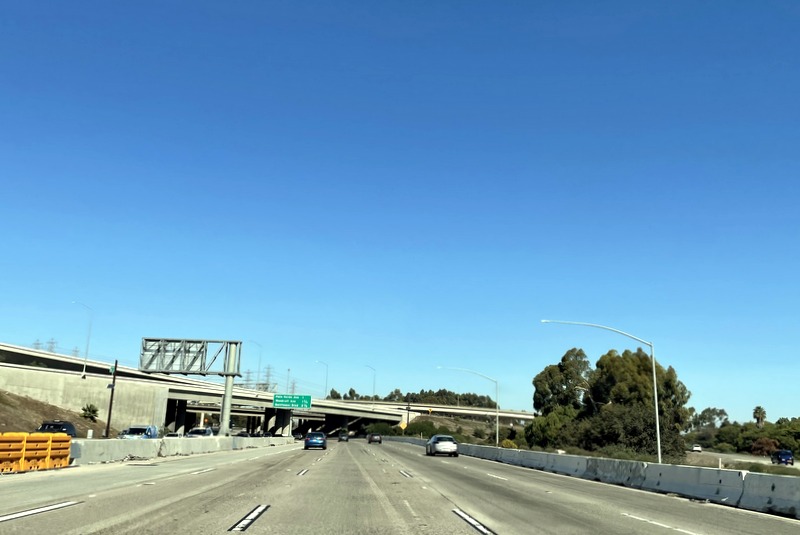Entering Freewaytopia with Paul Haddad
A few years ago I was rifling through the stacks at the Montrose bookshop Once Upon a Time and came across the title 10,000 Steps a Day in LA: 52 Walking Adventures by Paul Haddad. On a whim I bought it and it’s since become one of my most treasured books. I’ve carried it many a mile around LA while completing one of its walking adventures. So when I heard about the author’s latest release, Freewaytopia: How Freeways Shaped Los Angeles I knew I just had to read it.

You many think that freeways might be boring to read about and I must admit I did wonder if the subject matter would be a little dry but I needn’t have. Just like Haddad turned an everyday walk into a fun adventure in 10,000 Steps a Day he has proven that freeways are, in fact, rather fascinating in Freewaytopia.

Los Angeles may be synonymous with the word freeway but it wasn’t always that way. In fact, less than 100 years ago there was nary one in sight. But once the automobile proved to be more than a passing fad the powers that be decided that commuters needed an quicker way to get around and freeways soon became an ubiquitous part of the landscape.

But how did they get here? How exactly were they built? Why are they located where they are? And what did they replace? These questions and more are answered in Freewaytopia. Beginning with the Arroyo Seco Parkway, Haddad shares the stories of 10 Los Angeles freeways from their inception to their present day existence and through these stories is told the evolution of LA county from a largely rural landscape to a booming metropolis.

The story isn’t always pretty and quite often it’s downright heartbreaking but the truth is that without freeways Los Angeles would not be the city it is today, for better or worse. As Haddad says, “Like it or not, freeways are here to stay” and he suggests that we start looking at them in a different way. Rather than begrudgingly thinking of them as a means to an end we should embrace the fact that they are conduits to new places and new experiences. Inspired by this I decided to take a ride on one of LA’s smallest freeways, the 1.6 mile Terminal Freeway in Long Beach. Incidentally, I had never heard of this one until I read the book.

As you can see from the view through my windshield it’s not the most glamour of roadways. It’s 1.6 miles are slightly bumpy and largely nondescript save for the ever present freight trains that travel alongside them. As its main purpose is quick access to the port it’s mostly used by industrial vehicles and at times I felt like a trespasser in my mid-sized sedan. But this humble roadway does hold a an interesting origin story as, per Haddad, at the time of its planning the country was in the thick of World War II and the area was the epicenter of local shipbuilding. The freeway would allow defense workers quick access to their very necessary jobs. Unfortunately, the freeway wasn’t completed until 1947 – after the war had ended. No longer a vital transportation corridor it sank into oblivion and, at present, is on the verge of decommission.

Without Freewaytopia I would have never learned of the unique Terminal Freeway let alone driven on it. And there are so many more interesting facts in the book. I found it endlessly absorbing and a joy to read. Paul Haddad knows Los Angeles inside and out and his love of the area shines forth in this book, as well as his others. If you think freeways are uninteresting give Freewaytopia a read and learn just how fascinating they are.

